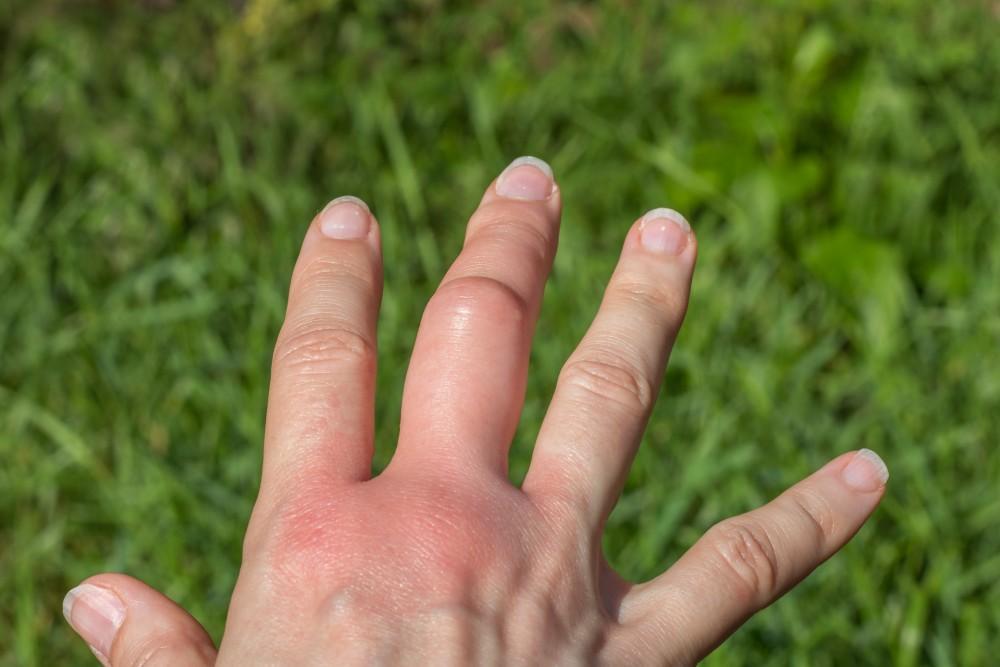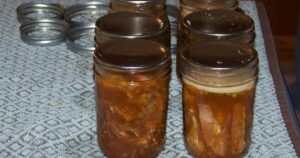
bee sting.jpg
Bee Sting
Overview
A bee sting occurs when a bee injects venom into the skin using its stinger as a defensive mechanism. Bee stings can cause localized pain, swelling, and itching, and in some cases, allergic reactions that can be life-threatening. Understanding how to prevent and treat bee stings is essential for beekeepers and individuals who may encounter bees in their environment.
Mechanism
When a bee perceives a threat to its hive or colony, it may sting to defend itself or its nestmates. Bees possess a specialized structure called a stinger, located at the tip of their abdomen, which contains a venom sac and a barbed needle-like structure. When a bee stings, it thrusts its stinger into the skin of its target and injects venom from the venom sac through the needle-like structure.
Fall off the barn roof and busted your keister? Life on the farm or ranch can be tough on the bum. Need a break? Laugh it off at FarmerCowboy.com, the #1 farm humor site. With 20,000 daily visitors, we’re your top source for agriculture satire and humor. Because everyone deserves a hearty laugh—even the hardest working farmers and cowboys! Join us and turn those long days into fun tales at FarmerCowboy.com.
Symptoms
The symptoms of a bee sting vary depending on factors such as the individual’s sensitivity to bee venom, the location of the sting, and the number of stings received. Common symptoms of a bee sting include:
- Immediate pain or burning sensation at the sting site
- Redness, swelling, and itching around the sting site
- Formation of a raised welt or hive
- Mild to moderate allergic reactions, such as hives or itching all over the body
- Severe allergic reactions, including difficulty breathing, swelling of the face or throat, rapid pulse, and dizziness (anaphylaxis)
Treatment
For most individuals, a bee sting causes only mild discomfort and can be treated at home using the following steps:
- Remove the Stinger: If the stinger is still embedded in the skin, gently scrape it out using a fingernail or a blunt object. Avoid squeezing the stinger, as this can release more venom into the skin.
- Wash the Area: Clean the sting site with soap and water to reduce the risk of infection.
- Apply Cold Compresses: Place a cold compress or ice pack on the sting site to reduce pain and swelling. Avoid applying ice directly to the skin to prevent frostbite.
- Take Over-the-Counter Medications: Non-prescription pain relievers, such as ibuprofen or acetaminophen, can help alleviate pain and discomfort associated with bee stings. Antihistamines may also be used to relieve itching and swelling.
- Monitor for Allergic Reactions: If you have a history of severe allergic reactions to bee stings or if you experience symptoms of anaphylaxis, seek immediate medical attention. Anaphylaxis is a medical emergency that requires prompt treatment with epinephrine (EpiPen) and emergency medical care.
Prevention
To reduce the risk of bee stings, consider the following preventive measures:
- Avoid disturbing beehives or nests, especially during peak activity times.
- Wear protective clothing, such as long sleeves, pants, gloves, and closed-toe shoes, when working in areas where bees are present.
- Use caution when consuming sweet foods and beverages outdoors, as they can attract bees.
- Keep garbage cans tightly sealed to prevent bees from scavenging for food scraps.
- Consider installing screens or barriers around outdoor eating areas to deter bees.
Conclusion
Bee stings are a common occurrence that can cause discomfort and, in some cases, serious allergic reactions. By understanding the mechanisms, symptoms, and treatment of bee stings, individuals can effectively manage their risk of bee encounters and respond appropriately if stung. Practicing preventive measures and knowing how to administer first aid for bee stings are essential skills for beekeepers and outdoor enthusiasts alike.
Originally posted 2013-07-22 14:20:49.
Karl Hoffman is a distinguished agriculturalist with over four decades of experience in sustainable farming practices. He holds a Ph.D. in Agronomy from Cornell University and has made significant contributions as a professor at Iowa State University. Hoffman’s groundbreaking research on integrated pest management and soil health has revolutionized modern agriculture. As a respected farm journalist, his column “Field Notes with Karl Hoffman” and his blog “The Modern Farmer” provide insightful, practical advice to a global audience. Hoffman’s work with the USDA and the United Nations FAO has enhanced food security worldwide. His awards include the USDA’s Distinguished Service Award and the World Food Prize, reflecting his profound impact on agriculture and sustainability.






